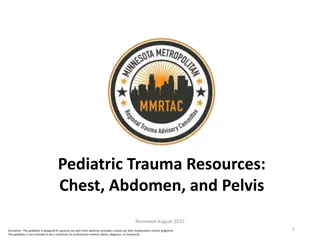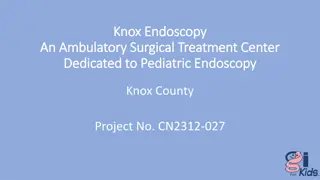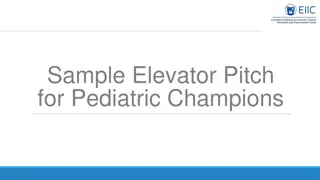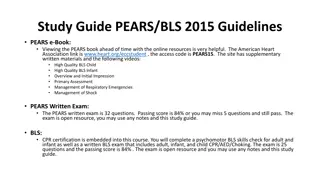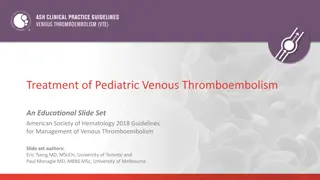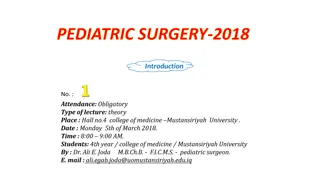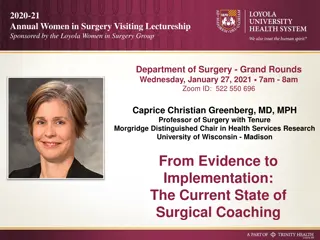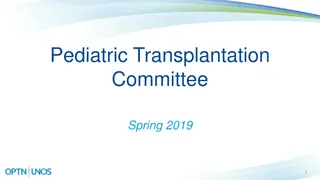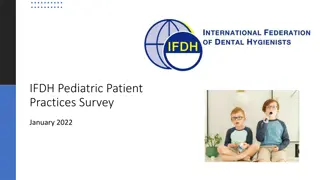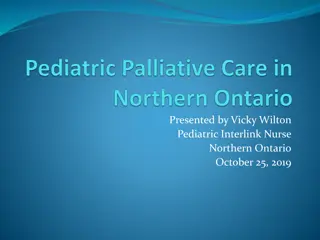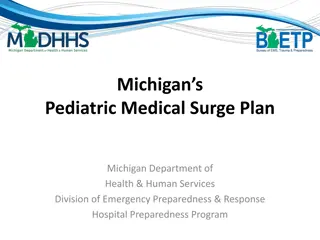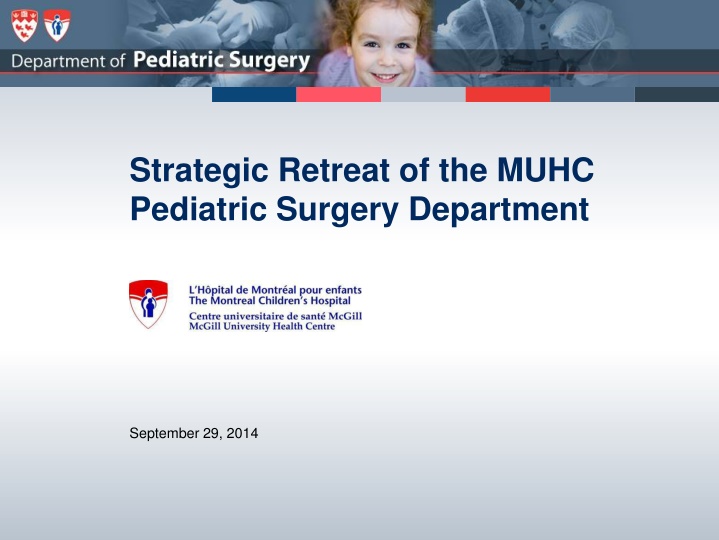
MUHC Pediatric Surgery Department Strategic Retreat Overview
Explore the strategic retreat of the MUHC Pediatric Surgery Department held on September 29, 2014. Dive into the objectives, agenda items, departmental history, and success factors to reinforce the identity and growth of the department. Witness the development strategies to counter adversities and the focus on opportunities for the future.
Download Presentation

Please find below an Image/Link to download the presentation.
The content on the website is provided AS IS for your information and personal use only. It may not be sold, licensed, or shared on other websites without obtaining consent from the author. If you encounter any issues during the download, it is possible that the publisher has removed the file from their server.
You are allowed to download the files provided on this website for personal or commercial use, subject to the condition that they are used lawfully. All files are the property of their respective owners.
The content on the website is provided AS IS for your information and personal use only. It may not be sold, licensed, or shared on other websites without obtaining consent from the author.
E N D
Presentation Transcript
Strategic Retreat of the MUHC Pediatric Surgery Department September 29, 2014
Agenda Items Objectives for the session History of the department Growth themes Knowledge on the themes Facilitator Timing Dr. Farmer 16:00-16:05 Dr. Farmer 16:05-16:15 Dr. Farmer 16:15-16:30 McKinsey 16:30-16:45 Breakout: Brainstorm future state Identify initiatives Dinner Associate chair facilitators 16:45-17:45 All 17:45-18:30 Debrief of the breakouts and feedback Prioritization and interest exercise Facilitators, all 18:30-19:20 McKinsey, all 19:20-19:40 Conclusion and next steps Dr. Farmer & McKinsey 19:40-20:00 McKinsey & Company | 1
Objectives of the retreat Reinforce our identity as an academic group striving to improve surgical health care of children and adolescents Explore opportunities for growthof our new department in the current health care context Develop strategies to counter adversities McKinsey & Company | 2
Success for today Success factors for participants What we d like to achieve today Align on the major pillars of growth for the pediatric surgery department Brainstorm and prioritize a list of ideas/initiatives for the department to focus on Agree on clear next steps to bring these initiatives to life Participate actively in the group and break-out discussions Voice your ideas, preferences and concerns Focus on opportunities, not obstacles, when exploring initiatives Be constructive there`s no such thing as a bad idea! McKinsey & Company | 3
Agenda Items Objectives for the session History of the department Growth themes Knowledge on the themes Facilitator Timing Dr. Farmer 16:00-16:05 Dr. Farmer 16:05-16:15 Dr. Farmer 16:15-16:30 McKinsey 16:30-16:45 Breakout: Brainstorm future state Identify initiatives Dinner Associate chair facilitators 16:45-17:45 All 17:45-18:30 Debrief of the breakouts and feedback Prioritization and interest exercise Facilitators, all 18:30-19:20 McKinsey, all 19:20-19:40 Conclusion and next steps Dr. Farmer & McKinsey 19:40-20:00 McKinsey & Company | 4
Departmental History January 2007 MCH Department of Surgery becomes MUHC Department of Pediatric Surgery January 2007 November 2011 A. Proposal for creation of University Department of Pediatric Surgery B. Negotiations with other departments for 2 years C. Faculty committee to assess proposition D. University committee to review proposition at Provost level Spring 2011 E. Senate approval October 2011 F. Board of Governors approval November 2011 Department encompasses all pediatric surgeons practicing primarily at Montreal Children s Hospital and Shriners Hospital, two new STATE OF THE ART health care facilities who share an emphasis on tertiary surgical activities. McKinsey & Company | 5
Departmental History Advantages Adult leadership had no time for pediatric surgical academic issues Only input to and from Dean for MCH surgeons was via Chair of Pediatrics Extensive cross fertilization amongst pediatric surgery disciplines Levelling playing field within MCH between Pediatrics and Pediatric Surgery Levelling playing field with H pital Sainte-Justine with respect to Pediatric Surgical PREMs Improve academic promotion process for departmental members Department of Pediatric Surgery best positioned with respect to working conditions of its membership McKinsey & Company | 6
Departmental Milestones April 2012 Inaugural Retreat Guests: Dean Eidelman, Associate Dean Ludwig Themes: Promotions, academic rank and tightening relations with Faculty 4 Associate Chairs appointed October 2012 July 2013 Creation of Department of Pediatric Surgery Regulations document Spring 2013 2nd retreat Themes: 1) Clinical and basic science research; 2) Visit of Glen construction site Spring Summer 2013 Pulse Survey 360 evaluation of all members September 2013 Appointment of 5th Associate Chair Dr. Reggie Hamdy September 29 2014 Departmental retreat Theme: Growth Strategy McKinsey & Company | 7
Mission statement The mission of the McGill Department of Pediatric Surgery consists of optimizing clinical care, education and research as it pertains to the treatment, present and future, of children with surgical ailments in a welcoming and safe hospital environment. Value statement The Department values integrity, honesty, equipoise and the respect for the rights of others as well as the highest levels of clinical ethics and strives to integrate these values into its clinical, teaching, research and learning activities. McKinsey & Company | 8
Department of Pediatric Surgery Recruitment (full time) since 2007 Cardiac Surgery: Dr. Pierre-Luc Bernier Dentistry: Dr. Broula Jamal, Dr. Jaime Greenspoon, Dr. Basma Dabbagh General Surgery: Dr. Sherif Emil, Dr. Robert Baird Gynecology: Dr. Ian Comeau Neurosurgery: Dr. Roy Dudley Ophthalmology: Dr. Ayesha Khan, Dr. Daniela Toffoli Orthopedic Surgery: Dr. Neil Saran, Dr. Marie Gdalevitch ORL-HNS: Dr. Yol ne Lacroix, Dr. Melanie Duval Plastic Surgery: Dr. Mirko Gilardino, Dr. Sabrina Cugno McKinsey & Company | 9
Department of Pediatric Surgery Departmental Promotions Dr. Pramod Puligandla 2007-2011: Since 2011: Fall 2012: Dr. JP Capolicchio Spring 2013: Dr. Jean Ouellet Fall 2013: Dr. Sam Daniel Dr. Mohamed El-Sherbiny Dr. Mirko Gilardino Spring 2014: One dossier submitted Fall 2014: Two dossiers submitted McKinsey & Company | 10
Department of Pediatric Surgery wants to develop a transversal strategy which goes across organizations Glen site Other sites Orthopedic Surgery Urology Neurosurgery Plastic surgery Cardiac Surgery Pediatric General Surgery Otolaryngology Ophthalmology Gynecology Dentistry Orthopedic Surgery Urology Neurosurgery Plastic Surgery Adult hospitals Transition to adult care for patients with congenital (life long) conditions Women health and prenatal screening Cancer mission Adult hospitals Transition to adult care for patients with congenital (life long) conditions Women health and prenatal screening Cancer mission Chest Wall clinic Clinics (e.g. Polyclinic) Primary and secondary care Clinics Primary and secondary care Primary and secondary care Congenital clinic Telemedicine and outreach clinics Department of pediatric surgery of the MUHC Research Education Continuous competence development McKinsey & Company | 11
Agenda Items Objectives for the session History of the department Growth themes Knowledge on the themes Facilitator Timing Dr. Farmer 16:00-16:05 Dr. Farmer 16:05-16:15 Dr. Farmer 16:15-16:30 McKinsey 16:30-16:45 Breakout: Brainstorm future state Identify initiatives Dinner Associate chair facilitators 16:45-17:45 All 17:45-18:30 Debrief of the breakouts and feedback Prioritization and interest exercise Facilitators, all 18:30-19:20 McKinsey, all 19:20-19:40 Conclusion and next steps Dr. Farmer & McKinsey 19:40-20:00 McKinsey & Company | 12
There are 5 themes that emerge Growth Strategy Increase awareness and recognition in Quebec Focus on tertiary care, but also other services to ensure high quality family-centered care Offer a portfolio of services which are financially sustainable 1 2 3 4 5 Reinforcing the brand Family centered care (Mother, child, adult continuum) Marketing strategy (e.g. Glenn site, 4C competence, care, commitment, compassion, Wee care campaign) Excellence and timely patient care Improving mindsets and behaviors of non-departmental staff Process improvement (e.g. 1st contact) Nursing and anesthetist staff recruiting, retention and scheduling Management role modeling and support Building a strong sense of ownership among departmental members Shared values and mission (departmental regulations) Sense of purpose and impact Citizenship to the department Clear expectations in terms of roles and responsibilities Clear entry criteria for outside staff Increasing research and innovation Technological innovations (e.g. Minimally invasive surgery) Unique assets (e.g. intra- operative MRI) Clinical research Developing and enhancing services and specialties Shorter wait lists for primary and secondary procedures by leveraging network More tertiary type procedures in MCH site Services for mothers during pregnancy and at birth Services for adults with congenital conditions Outreach services McKinsey & Company | 13
When we asked you to rank the pillars, 4 clear priorities emerged Question: These are the 5 themes that emerged from the discussion at the May 5th Surgical Directors Meeting. Which themes should be prioritized at the retreat? Answered: 17 Skipped:0 Reinforcing the brand 3.59 1 Improving mindsets and behaviors of non- departmental staff Building a strong sense of ownership among departmental members 3.53 2 2.59 3 Increasing research and innovation 1.94 4 Developing and enhancing services and specialties 5 3.35 McKinsey & Company | 14
When we asked you to rank the pillars, 4 clear priorities emerged Growth Strategy Increase awareness and recognition in Quebec Focus on tertiary care, but also other services to ensure high quality family-centered care Offer a portfolio of services which are financially sustainable 1 2 3 4 5 Reinforcing the brand Family centered care (Mother, child, adult continuum) Marketing strategy which leverages new Glenn site Excellence and timely patient care Improving mindsets and behaviors of non-departmental staff Process improvement (e.g. 1st contact) Nursing and anesthetist staff recruiting, retention and scheduling Management role modeling and support Building a strong sense of ownership among departmental members Shared values and mission (departmental regulations) Sense of purpose and impact Citizenship to the department Clear expectations in terms of roles and responsibilities Clear entry criteria for outside staff Increasing research and innovation Technological innovations (e.g. Minimally invasive surgery) Unique assets (e.g. intra- operative MRI) Clinical research Developing and enhancing services and specialties Shorter wait lists for primary and secondary procedures by leveraging network More tertiary type procedures in MCH site Services for mothers during pregnancy and at birth Services for adults with congenital conditions Outreach services McKinsey & Company | 15
Agenda Items Objectives for the session History of the department Growth themes Knowledge on the themes Facilitator Timing Dr. Farmer 16:00-16:05 Dr. Farmer 16:05-16:15 Dr. Farmer 16:15-16:30 McKinsey 16:30-16:45 Breakout: Brainstorm future state Identify initiatives Dinner Associate chair facilitators 16:45-17:45 All 17:45-18:30 Debrief of the breakouts and feedback Prioritization and interest exercise Facilitators, all 18:30-19:20 McKinsey, all 19:20-19:40 Conclusion and next steps Dr. Farmer & McKinsey 19:40-20:00 McKinsey & Company | 16
How do people define patient experience in hospitals? 1 2 3 4 5 You watch them and once in a while you have to say please wash your hands first Quality To have good nurses kind and gentle when you are in pain that is a big help I do have an emotional connection because I had my daughter here and also because I have local roots Service, comfort, and convenience Emotional fulfillment McKinsey & Company | 17
Distinctive patient experience centers have 4 reinforcing strengths 1 2 3 4 5 1 2 3 4 Patient insights Value proposition Performance management Execution Start with deep insight on needs, occasions, journeys Identify moments of truth Validate using multiple sources Define explicitly, often unique per segment Communicate brand promise that satisfies all and delights a few Streamline operations to deliver on brand promise Create user- centric talent model and culture Prescribe interactions for front-line staff at critical touch points Define metrics and report performance on patient interaction Instill front-line problem solving to deliver distinctive experience McKinsey & Company | 18
1. Patient segments differ in reported ability to be influenced by elements of experience 1 2 3 4 5 Percent of inpatients Group 1 Segment Comfort seekers Characteristics Want to feel welcomed and comforted by staff Desire significant contact with family and friends Value convenient scheduling and delay notifications Tend to be younger, have children, and lower incomes Group 2 7% 21% Have higher incomes and willing to pay for comfort Strongly influenced by hospital reputation More likely to ask physician for a referral to a particular hospital 24% 36% Amenity seekers Interested in efficiency; want to be kept informed Most willing to challenge doctor s recommendation Lower interest in entertainment options (TV, internet) Often have lower incomes 17% 18% Control seekers Most concerned about location and convenience Less frequent and less intense hospital encounters 22% 11% Just the basics Heavily dependent on physician recommendation Some members delay visit after doctor s diagnosis Least likely to be influenced by patient experience factors 16% 29% Physician- reliant SOURCE: 2007 McKinsey Patient Experience Survey McKinsey & Company | 19
2. Some elements of experience will be an important part of the value proposition to all segments 1 2 3 4 5 What areas are most important to your hospital choice? % of all patients selecting area as top choice What service would most compel you to ask your doctor to send you to a certain facility? Example services selected as top choice (relative frequency) Keeping you informed 26 Designated a staff member who follows your case 3.1 Value for money 13 Timeliness of appointments 10 Provided you with a Road to Recovery packet 3.1 Food/entertainment options 10 Room appearance Gave you a pre-visit phone call from a qualified staff member 9 2.5 7 Supportive environment Ease of access 7 Accessed a Get Well Network 1.7 6 Clarity of hospital bill Had a get-to-know-us link on the hospital s web site 1.1 5 Registration process Appointment scheduling 5 Had links to quality and satisfaction data on web site 1.0 2 Comfort of common areas SOURCE: 2007 McKinsey Patient Experience Survey McKinsey & Company | 20
3. Execution will require significant operational and front-line change: mom/baby nurse example 1 2 3 4 5 Typical situation Gold standard Heavily focused on clinical task, often with little explanation to patient Provides help and emotional support to well- liked patients Flawless execution of clinical tasks with clear explanations to all patients Makes patients of diverse backgrounds feel comfortable and welcome Behaviors/ actions Some gaps in clinical competency Understanding of patient needs based on personal assumptions and experience Limited training in managing people or collaborating with teammates Consistently demonstrates high-level clinical competency Accurately assesses patient needs using multiple inputs and makes real-time adjustments to deliver individualized patient experience Capabilities Some patients are very frustrating Patient experience is all about the wallpaper which I can t control I have no control over the doctors or support services I can see myself/daughter in every one of these patients I have an obligation to guide my colleagues service staff, doctors to ensure the patient care and experience are exceptional Mindsets (often unspoken) Less-than-optimal capacity utilization resulting in unnecessary patient wait time No standard approach for shift changeovers Unclear roles of support providers Use lean principles to free up capacity and reduce patient wait time (e.g., simple, visual boards showing discharges for this shift) Standard, best practice shift meeting Clear role descriptions with mom/baby and with service providers Operational changes McKinsey & Company | 21
Improving mindsets and behaviors of non-departmental staff requires a shift in mindsets and beliefs 1 2 3 4 5 Possible root causes for underlying limiting mindsets What we see and attempt to address Individual behaviors External constraints (e.g., rules, regulations, roles) Misunderstanding I m not allowed Limited resources & time Insufficient skills or training What we don t see and don t know how to address Lack of confidence or encouragement I can t Lack of motivation, rewards or recognition Disillusion I won t Fatigue We have to operate at both the visible and hidden levels to really understand what drives behaviors and mindsets SOURCE: McKinsey McKinsey & Company | 22
There are four change levers that, if applied appropriately, will underwrite the success of a culture change 1 2 3 4 5 Foster understanding and conviction I know the changes in behaviour expected of me and they make sense to me Ensure role modelling I see leaders, peers and reports behaving in line with the changes requested of me 4.1 times more likely to be successful if you role-model 3.7 times more likely to be successful with a change story Developing skills required for change Reinforce with formal structures and processes The structures, processes and systems reinforce the changes in behaviour that are being asked of me 4.2 times more likely to be successful with performance targets and incentives 2.4 times more likely to be successful if you build capabilities I have the skills, capabilities and opportunities to implement the requested changes SOURCE: McKinsey Quarterly Transformational Change survey, January 2010 McKinsey & Company | 23
Why are we here? 1 2 3 4 5 Because developing physician alignment is critical to long-term hospital success Physician alignment goals Active MD engagement in strategic and operational hospital initiatives Doctors collaborating with administrators on important clinical decisions Clinician s role becomes that of healer, leader, and partner Examples of success After Kaiser Permanente Colorado made clinical leadership an explicit force for improving care, the hospital became the Kaiser system s highest- performing affiliate on quality of care A recent London School of Economics study found that hospitals with the greatest clinician participation in management score about 50% higher on important drivers of performance vs. hospitals with low levels of clinician leadership Broad system benefits Practicing MDs hold the key to realizing hospital vision by using their day-to-day experience to inform continuous improvement of services Physicians have unique technical knowledge that helps in making sound-strategic choices about longer-term patterns of service delivery Doctors are enabled to make effective decisions locally, eliminating the need for excessive bureaucracy and top-down intervention Empirical evidence1 illustrates that CEOs in the highest-performing hospitals engage clinicians in focused dialogue and in joint problem- solving efforts 1 Results from study Enhancing Engagement in Clinical Leadership conducted by the Royal Medical Colleges and NHS Institute, 2007 SOURCE: A healthier health care system for the United Kingdom, Enhancing Engagement in Clinical Leadership McKinsey & Company | 24
We need to appeal to multiple levels of meaning 1 2 3 4 5 Example building a cathedral 5 levels of meaning Society Patient Hospital Team Self McKinsey & Company | 25 Source: McKinsey
Consolidating surgical procedures into a single department could enable the department to offer quicker access to targeted treatment, a key differentiator 1 2 3 4 5 Previous work has shown that moving towards a service line model allows hospi- tals to make operational improvements Physicians and administrators can share best practices with similar service-lines elsewhere Standardizing procedures and practices becomes easier (ex: codifying and monitoring best practices) Support staff can set up and turnover rooms more efficiently Purchases can be streamlined Human resources can be improved strategically Resulting in positive organizational outcomes. Building a critical mass of patients in select areas Enjoying economies of skill and scale Becoming more productive Improving their quality of care Recruiting physicians more effectively Building market share SOURCE: McKinsey Analysis McKinsey & Company | 26
Day surgeries are becoming increasingly common 1 2 3 4 5 Day surgery Inpatient procedure Same-day admission Day surgeries have increased to nearly three quarters of procedures in 2013 and took up over half of total operating room hours Operating room hours 2010-2014 Number of surgeries 2010-2014 7,104 11,844 6,944 11,449 6,764 11,278 10,951 10,790 14% 6,191 6,088 21% 22% 31% 13% 19% 37% 39% 23% 34% 38% 15% 12% 21% 18% 17% 19% 16% 26% 23% 73% 66% 64% 60% 60% 51% 45% 43% 39% 40% 2010 2011 2012 2013 2014 2010 2011 2012 2013 2014 1 Includes all specialties including radiology hematology, and gastroentorology SOURCE: Montreal Children's Hospital McKinsey & Company | 27
Agenda Items Objectives for the session History of the department Growth themes Knowledge on the themes Facilitator Timing Dr. Farmer 16:00-16:05 Dr. Farmer 16:05-16:15 Dr. Farmer 16:15-16:30 McKinsey 16:30-16:45 Breakout: Brainstorm future state Identify initiatives Dinner Associate chair facilitators 16:45-17:45 All 17:45-18:30 Debrief of the breakouts and feedback Prioritization and interest exercise Facilitators, all 18:30-19:20 McKinsey, all 19:20-19:40 Conclusion and next steps Dr. Farmer & McKinsey 19:40-20:00 McKinsey & Company | 28
Plan for the breakout (60 min) 4 priorities for the Pediatric Surgery Department s growth Strategy Activity Timing Identify a person who will present the outcomes of the small team discussion to the broader group and someone to take notes on the white board 5 min 1 2 3 4 5 Impro- ving mindset s and beha- viors of non- depart- mental staff Building a strong sense of owner- ship among depart- mental members Deve- loping and enhan- cing services and special- ties Rein- forcing the brand Part 1: Brainstorm on the content of the pillar 20 min Part 2: Build an action plan with specific initiatives and potential owners for the next 12 to 24 months 25 min Facilitators Transcribe on white board to share with broader group 10 min Dr. Daniel & Hamdy Dr. Capo- locchio Dr. Laberge Dr. Emil McKinsey & Company | 29
Growth pillar 1: Reinforcing the Brand Facilitated by Dr. Sam Daniel and Dr. Reggie Hamdy 1 2 3 4 5 Part 1: Brainstorm a future state (20 min) What are we trying to achieve with marketing and branding? What is the MUHC Pediatric Surgery Department best known for today? What key strengths differentiate the department from other children s hospital? What should be our key value proposition to parents and children? Part 2: Build an action plan (25 min) What specific initiatives/actions should be undertaken? Who should lead each initiative/action? SOURCE: McKinsey McKinsey & Company | 30
Growth pillar 2: Improving mindsets and behaviors of non-departmental staff Facilitated by Dr. J.P. Capolicchio 1 2 3 4 5 Part 1: Brainstorm a future state (20 min) What specific process improvement can we achieve (short and long term)? What types of behaviors would we like to see? How can we get management to role model those desired behaviors? Part 2: Build an action plan (25 min) What specific initiatives/actions should be undertaken? Who should lead each initiative/action? SOURCE: McKinsey McKinsey & Company | 31
Growth pillar 3: Building a strong sense of ownership among departmental members Facilitated by Dr. Sherif Emil 2 3 4 2 5 1 Part 1: Brainstorm a future state (20 min) What common values define pediatric surgeons? What tools do we have to strengthen our sense of belonging? What common roles and responsibilities do we share? Part 2: Build an action plan (25 min) What specific initiatives/actions can we take to encourage better attendance at academic rounds? How can we enhance our multidisciplinary approach? Who should lead each initiative/action? SOURCE: McKinsey McKinsey & Company | 32
Growth pillar 5: Developing and enhancing services and specialties Facilitated by Dr. Jean-Martin Laberge 1 2 3 4 5 Part 1: Brainstorm a future state (20 min) How can we reduce the wait list for primary and secondary procedures? How will we offer services to mothers during pregnancy and at birth? How will we offer services for adults with congenital conditions? Part 2: Build an action plan (25 min) What specific initiatives/actions should be undertaken? Who should lead each initiative/action? SOURCE: McKinsey McKinsey & Company | 33
Dinner 17:45 18:30 McKinsey & Company | 34
Agenda Items Objectives for the session History of the department Growth themes Knowledge on the themes Facilitator Timing Dr. Farmer 16:00-16:05 Dr. Farmer 16:05-16:15 Dr. Farmer 16:15-16:30 McKinsey 16:30-16:45 Breakout: Brainstorm future state Identify initiatives Dinner Associate chair facilitators 16:45-17:45 All 17:45-18:30 Debrief of the breakouts and feedback Prioritization and interest exercise Facilitators, all 18:30-19:20 McKinsey, all 19:20-19:40 Conclusion and next steps Dr. Farmer & McKinsey 19:40-20:00 McKinsey & Company | 35
Debrief of the breakout and feedback 18:30-19:20 McKinsey & Company | 36
Agenda Items Objectives for the session History of the department Growth themes Knowledge on the themes Facilitator Timing Dr. Farmer 16:00-16:05 Dr. Farmer 16:05-16:15 Dr. Farmer 16:15-16:30 McKinsey 16:30-16:45 Breakout: Brainstorm future state Identify initiatives Dinner Associate chair facilitators 16:45-17:45 All 17:45-18:30 Debrief of the breakouts and feedback Prioritization and interest exercise Facilitators, all 18:30-19:20 McKinsey, all 19:20-19:40 Conclusion and next steps Dr. Farmer & McKinsey 19:40-20:00 McKinsey & Company | 37
You need to have a balanced portfolio of initiatives 1 2 3 4 5 Easy Quick and easy small wins True quick wins; high impact with minimal difficulty Ideally symbolic First initiatives to launch Ease of implementation Hard fought, but substantial changes Sacred cows Hard Small impact Major impact Impact SOURCE: McKinsey Analysis McKinsey & Company | 38
Prioritization exercise 1 2 3 4 5 Vote In groups of 2 or 3 people Take 3 stickers of each colour for each theme (12 per person) Theme 1 Theme 2 Go around the room and discuss the various initiatives with your small group (potential impact, urgency, etc.) Theme 3 Theme 5 Text With your stickers, vote for the best initiatives (for each theme, you can put 1 sticker on 3 different initiatives or put the three stickers on one initiative if you really like it) Sign up Afterwards, identify 1 or 2 initiatives where you would personally be willing to get involved (write your name on a post-it, and stick it next to the selected initiatives) Name McKinsey & Company | 39
Agenda Items Objectives for the session History of the department Growth themes Knowledge on the themes Facilitator Timing Dr. Farmer 16:00-16:05 Dr. Farmer 16:05-16:15 Dr. Farmer 16:15-16:30 McKinsey 16:30-16:45 Breakout: Brainstorm future state Identify initiatives Dinner Associate chair facilitators 16:45-17:45 All 18:15-19:00 Debrief of the breakouts and feedback Prioritization and interest exercise Facilitators, all 19:00-19:20 McKinsey, all 19:20-19:40 Conclusion and next steps Dr. Farmer & McKinsey 19:40-20:00 McKinsey & Company | 40
Next steps - What specific actions we want to commit to Actions Owner 1. Document the output from the breakouts McKinsey 2. Revise the initiatives prioritized for each of the three themes in the associate chairs and directors meeting Associate chairs Directors 3. Develop the calendar of agenda topics for the follow-up on each initiative`s progress throughout the year Dr. Farmer 4. Finalize report and present to clinician administrative committee (CAC) Associate chairs Directors 5. Other commitments? All McKinsey & Company | 41
Evaluation form Extremely valuable 5 Not useful 1 2 3 4 Introduction and history of the department Presentation of growth themes and content Breakout 1: Brainstorming the future state Breakout 2: Identifying initiatives Prioritization exercise Global satisfaction Comments, suggestions, questions McKinsey & Company | 42


